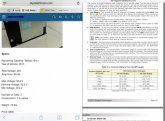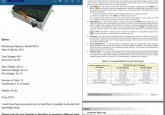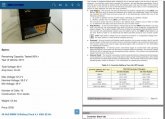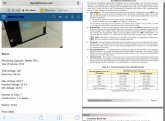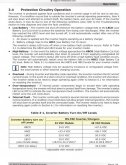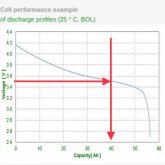luisenriquereyes
New Member
I am building a 48 Volt off grid system with a 5.5 kWh solar array powered by these Magnum Energy components:
48 Volt 4,400 Watt Magnum Inverter (Model: MS4448PAE)
100 Amp Magnum Charge Controller (Model: PT-100)
These are the three battery pack modules I am interested in:
48 Volt Nissan Leaf Battery Pack 3.5 kWh 66 Ah

Specs:
Remaining Capacity: Tested 70%+
Year of Vehicle: 2015
Total Voltage: 48V
Amp Hour: 66 Ah
Max Voltage: 58.8 V
Nominal Voltage: 52.5 V
Min Voltage: 40.0 V
Number of Cells: 7
Construction: 7 in-series
Weight: 70 lbs
Price: $800
60 Volt Chrysler Pacifica Battery Pack 3 kWh 45 Ah

Specs:
Remaining Capacity: Tested 90%+
Year of Vehicle: 2017
Total Voltage: 60 V
Amp Hour: 45 Ah
Max Voltage: 67.2 V
Nominal Voltage: 59.2 V
Min Voltage: 48 V
Number of Cells: 16
Construction: 16 in-series
Weight: 54 lbs
Price: $700
48 Volt BMW i3 Battery Pack 4.1 kWh 92 Ah

Specs:
Remaining Capacity: Tested 90%+
Year of Vehicle: 2017
Total Voltage: 48 V
Amp Hour: 92 Ah
Max Voltage: 49.2 V
Nominal Voltage: 44.4 V
Min Voltage: 32.4 V
Number of Cells: 12
Construction: 12 in-series
Weight: 59 lbs
Price: $775
I would purchase two packs and connect them in parallel to double their amperage rating.
Please vote for your favorite or favorites or suggest a different pack to help me in my purchasing decision.
Thank you very much
48 Volt 4,400 Watt Magnum Inverter (Model: MS4448PAE)
100 Amp Magnum Charge Controller (Model: PT-100)
These are the three battery pack modules I am interested in:
48 Volt Nissan Leaf Battery Pack 3.5 kWh 66 Ah

Specs:
Remaining Capacity: Tested 70%+
Year of Vehicle: 2015
Total Voltage: 48V
Amp Hour: 66 Ah
Max Voltage: 58.8 V
Nominal Voltage: 52.5 V
Min Voltage: 40.0 V
Number of Cells: 7
Construction: 7 in-series
Weight: 70 lbs
Price: $800
60 Volt Chrysler Pacifica Battery Pack 3 kWh 45 Ah

Specs:
Remaining Capacity: Tested 90%+
Year of Vehicle: 2017
Total Voltage: 60 V
Amp Hour: 45 Ah
Max Voltage: 67.2 V
Nominal Voltage: 59.2 V
Min Voltage: 48 V
Number of Cells: 16
Construction: 16 in-series
Weight: 54 lbs
Price: $700
48 Volt BMW i3 Battery Pack 4.1 kWh 92 Ah

Specs:
Remaining Capacity: Tested 90%+
Year of Vehicle: 2017
Total Voltage: 48 V
Amp Hour: 92 Ah
Max Voltage: 49.2 V
Nominal Voltage: 44.4 V
Min Voltage: 32.4 V
Number of Cells: 12
Construction: 12 in-series
Weight: 59 lbs
Price: $775
I would purchase two packs and connect them in parallel to double their amperage rating.
Please vote for your favorite or favorites or suggest a different pack to help me in my purchasing decision.
Thank you very much



